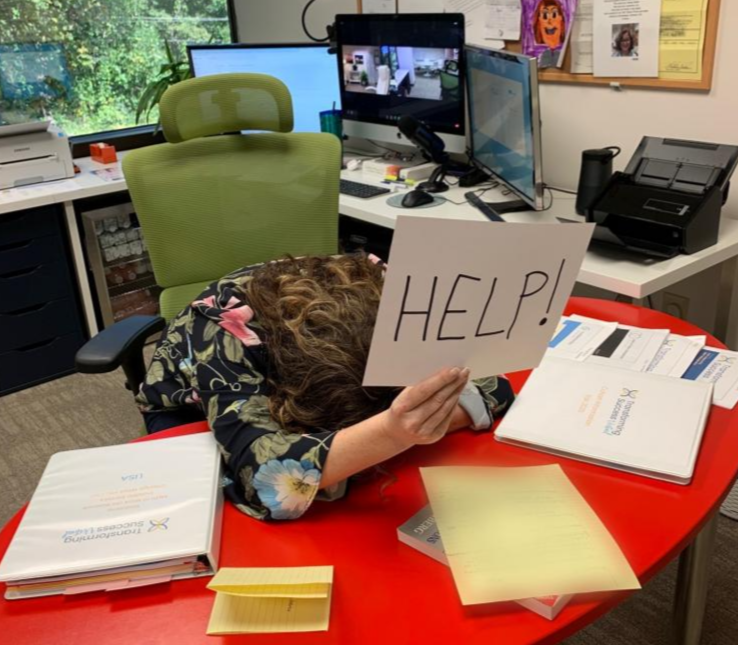Dear Friends, This is the second post about our efforts to practice the principles we teach. This month Lisa shares her “I cannot sit still” challenge that is the result of having too much to do. In two weeks our Facebook page discussion will focus on what Lisa has learned from the mini experiments suggested below. We hope you can join us! Lisa and Julie
Lisa’s Struggle
Julie: Hey, what’s up? What’s going on with you? Lisa: Well, to be honest, I’m struggling with finding any downtime. I cannot sit still. I have too much to do. I have this sense of always being behind, and that makes me feel that I can never relax. Even if I attempt to engage in a fun activity, I can’t really relax because I keep thinking that I should be working on my to-do list instead! Julie: Okay, you know the drill: tell me the story you’re telling yourself when that happens. Lisa: I think the story I’m telling myself is, ‘If I take a break instead of taking care of this task right now, there’s going to be another to-do item added to my list later, and I’m going to be angry with myself for not completing the initial task when I had a chance.’ As a result, even if I force myself to take a break, I don’t enjoy it!
Julie’s Advice
Julie: What is coming to mind for me is that if this was a client with a similar concern, we would suggest s/he conduct an experiment. I know you just said you can’t take a break and enjoy it, but what if you plan – and actually take — a two-hour break on a Saturday and see if that makes it better or worse? Would you be willing to experiment with that? Lisa: I don’t know what I would even do with those two hours, because I don’t know what’s fun or relaxing anymore! That sounds ridiculous, but it is true! I would say I need a week away, or a trip I could look forward to taking, but I can’t do that right now because of COVID. Besides, I know I need to consistently take breaks that don’t include a vacation. I can’t live at this pace without a break, but I don’t even know what to do if I do take one. And when I have tried it, somebody in my household usually wanted or needed something from me. Julie: Let’s keep it simple. How about structuring an experiment in two parts? First, set up a do-able amount of time that will really let you unplug. Second, proactively address the potential barriers that could get in the way of you truly taking that time for yourself. Let’s say you were told you could not work at all this Saturday from 3 to 5 in the afternoon. What’s the first thing you’d want to do? Lisa: I guess I would want to sit on the porch with a good book. Julie: Great! Now for the second piece: what potential barriers do you need to address so you can sit on the porch and just read in peace? Can you ask Charles to take the girls and tell them, ‘This is Mommy’s quiet time, and we’re not going to disturb her?’ Would that work? Or are there other barriers that might get in the way? Lisa: I can ask Charles to do that, and he would be glad to. But I will probably go to sleep while I’m trying to read, and then I won’t feel relaxed. I’ll wake up feeling worse. Julie: Good to know. So, we need to design this experiment even more specifically. In addition to asking Charles to keep the girls from disturbing you on Saturday afternoon, maybe you start the experiment on Friday night by actually getting enough sleep so you’re not tired on Saturday afternoon! Lisa: Hmmmm… your advice sounds really familiar, Jules. It’s almost like you’re suggesting that I engage in a series of mini-experiments – the way we train our clients to do! I think I can put this plan into action. I’ll try it and let you know how it works out! To learn more about themes we address (underlined above!) in this post, visit our leadership development program page, Transforming Success®.


